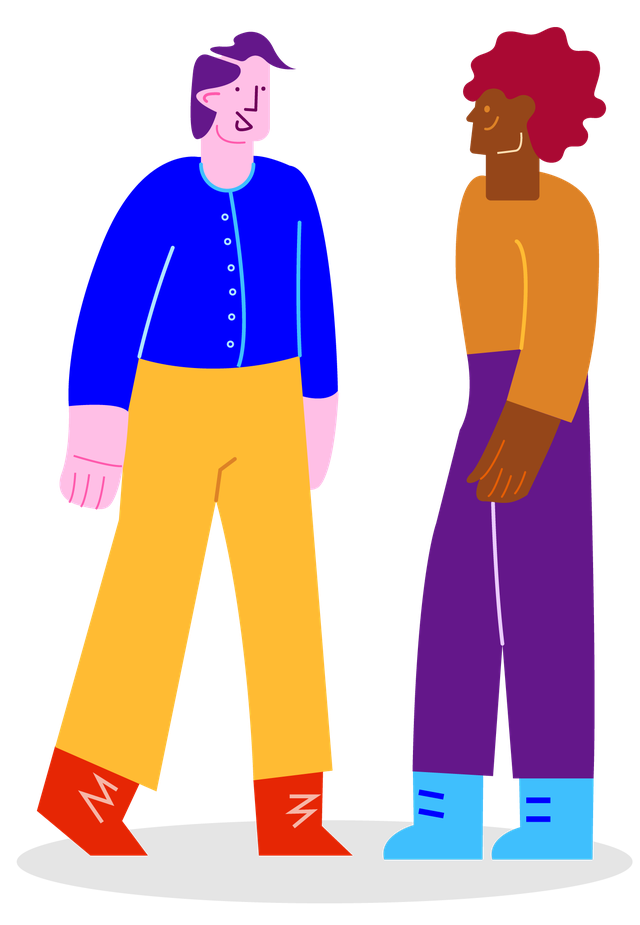Last updated: 06 October 2025
Overview
Nobody should have to leave part of themselves at the door to access services. However, racism and discrimination affect the services and support available to racially and ethnically marginalised people, putting those experiencing homelessness at even greater risk of exclusion.
Historically, homelessness services were designed so that they met the needs of a very specific group of people (heterosexual, white, men) and there is often a lack of awareness or knowledge of the direct and systemic effects of racism or the need to build cultural competency so that homelessness services are accessible and deliver for all those who require help.
Who is this page for?
The following page is for all staff who work in the homelessness sector and want to make improvements to service provision and practice, so that racially and ethnically marginalised people experiencing homelessness receive as high quality a service as their white counterparts.
With thanks to Expert Link and the contributors with lived experience, who kindly shared their stories but acknowledge that their experiences do not represent all racially and ethnically marginalised people. Trigger warning - this guidance includes details of racism.
Racism
The Equality Act 2010 is a UK law that protects people from discrimination based on nine protected characteristics.

Although the Equality Act gives people legal protection from discrimination based on race, racism is still a daily reality for marginalised people. Racism is defined as:
Prejudice, discrimination, or antagonism by an individual, community, or institution against a person or people on the basis of their membership of a particular racial or ethnic group, typically one that is a minority or marginalised. The belief that different races possess distinct characteristics, abilities, or qualities, especially so as to distinguish them as inferior or superior to one another.
Following the murder of George Floyd in 2020, and the resurgence of the Black Lives Matters movement, there was a sudden spotlight on racism through and across our systems, and an acknowledgement that racism shows up in different ways and has a range of impacts on individuals and communities.
Direct
Direct racism is overt, and more easily identified. It could include using derogatory language or physical violence to distinguish a particular group as inferior. For example, the abusive messages received by Black football players from the Euro 2020 football final, or this quote from Crisis’ report on racism (2024):
“…The guys said to us, these just ordinary guys drinking in the pub, they said, ‘You lot are not welcome next week when we have our big St George’s day party’ and I’m thinking flipping heck, and they say this out in the open in the pub.”
This kind of racism can also be ‘covert’ or under the radar, often based on assumptions or stereotypes about minoritised ethnic groups that steer someone’s thoughts and behaviours. For example, a Black person who is frustrated may be perceived as angry or aggressive and treated more harshly than a non-Black person, resulting in service exclusion. A quote from Crisis’s report highlights this:
“You can tell when people see and treat you differently, have a point of view, think of you a certain way. You can just see it but because they don’t actually say anything, you can’t really call it out, or you can, but then you just reinforce the stereotype that they’ve got of you because then you’re the angry Black man or angry Black woman.”
Covert racism also links to microaggressions; subtle, commonplace, and often unintentional verbal or nonverbal actions that communicate hostile, derogatory, or negative messages towards members of marginalised groups.
From a service perspective, it is easier both for staff and people being supported to identify and challenge more direct and open forms of racism, but organisational efforts to be anti-racist often begin, and end, here. However, while more difficult, it is essential that attention is also given to indirect racism, and beyond that, to enable genuinely inclusive services, organisations should also consider systemic forms of racism.
Systemic
Systemic racism is less about individual acts towards people, or communities, and more about societal structures and how they work for the people they serve. Homelessness is a systemic issue, fed by other systems such as, education, health and social care, criminal justice, as well as housing. Within each of these interlocking systems, racism shows up within policies and practices that make it fundamentally more difficult for People of Colour to access support and services, and Shelter (2025) concludes in their report:
People of Colour, particularly Black communities, are more likely to experience homelessness and live in deprived neighbourhoods or poor-quality homes.
Anti-racism
Anti-racist practices must acknowledge and tackle both direct, covert and systemic forms of racism in a proactive way. Some anti-racist practices may include:

